The veteran Dublin architect Brian Hogan remembers well the first time it happened. He was cycling along Burlington Road towards the Grand Canal in 2001 and passed a hoarding around the site of an office block he designed for Hardwicke Ltd in the late 1960s. "The building was gone." He had unwittingly become a member of the "rubble club".
This is the tongue-in-cheek term coined in architectural circles to describe a relatively recent phenomenon – the fact that older architects are now outliving many of their own buildings. And in Hogan’s case, the toll of demolition has become relentlessly repetitive as more and more of his work is cleared away, to make room for bigger, contemporary office blocks.
Now aged 90, Hogan was Dublin's most prolific commercial architect from the 1960s to the 1980s, designing such buildings as Lansdowne House in Ballsbridge, Telephone House in Marlborough Street, and two office blocks on Burlington Road, as well as Canada House on St Stephen's Green, Oisín House in Pearse Street and the Setanta Centre on Nassau Street.
We inherited a brick-built city, and if I were city architect in 1960 I would have drawn up a design code for the area within the canals to reflect that
He was often acting for Hardwicke Ltd, a very private development company run by Montague (“Mont”) Kavanagh and, after his untimely death in 1978, by his son Mark. Crucially, they were advised by chartered surveyors Jones Lang Wootton on what the market needed at any time; it was Norman Bowie’s arrival from London in the early 1960s to set up JLW here that changed the game.
“They saw Dublin as virgin territory and brought a new professionalism to the core elements of estate management and development,” Hogan recalls.
This included everything from site identification and acquisition to investment valuation, funding options, the assembly and control of a design team, project management, marketing “and ideally a pre-let [of an office block] to the State”.
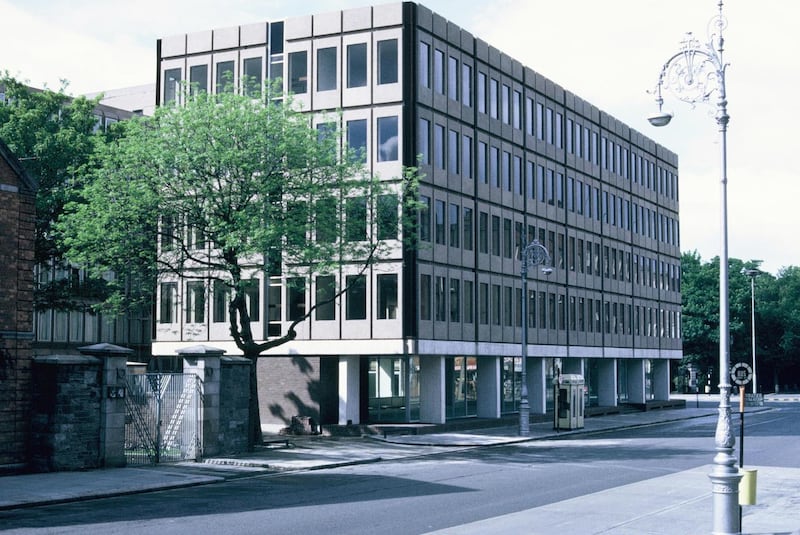
Another influential figure at the time was Desmond McGuane, then property investment manager of Irish Life. Asked by Hogan what he thought was the useful life of an office building, McGuane suggested about 30 to 35 years. That's when the value of its site would exceed the capital value of the building due to inflation and obsolescence, and then it would be "time to pull it down and start again".
Even though Hogan says this “may have been simplistic”, he credits McGuane with being “remarkably prescient”. Indeed, it was thanks to more liberal planning policies that his own brick-clad office blocks on Burlington Road, dating from 1969 to 1971, were demolished between 2001 and 2007 to make way for “new buildings of significantly greater bulk, height, floor area and glassiness”.

In Dublin, as he says, “we inherited a brick-built city, and if I were city architect in 1960 before redevelopment really started, I would have drawn up a design code for the area within the canals to reflect that”.
“I have no problem with getting light into a building, but brick should predominate over glass, with glazed openings no more more than 50 per cent. There needed to be some guidance.”
Hogan, who always kept a low profile, sees the erasure of his buildings, with their “normal standard functions”, as further evidence of the disposability culture of contemporary society.
“All the stakeholders want continuous renewal on the basis that this is better than what went before. It’s life – uncontrolled development life – and it devalues well-built buildings that were designed to last.”
Having been taken aback to see the first of them go, “I thought – so this is it. This is the beginning now.”
Since then more of his buildings have been falling like ninepins. Canada House had fallen victim to pre-cast concrete disease, so its demolition was probably inevitable, but Oisín House was still in good condition when it was pulled down last year by TCD to make way for student housing.
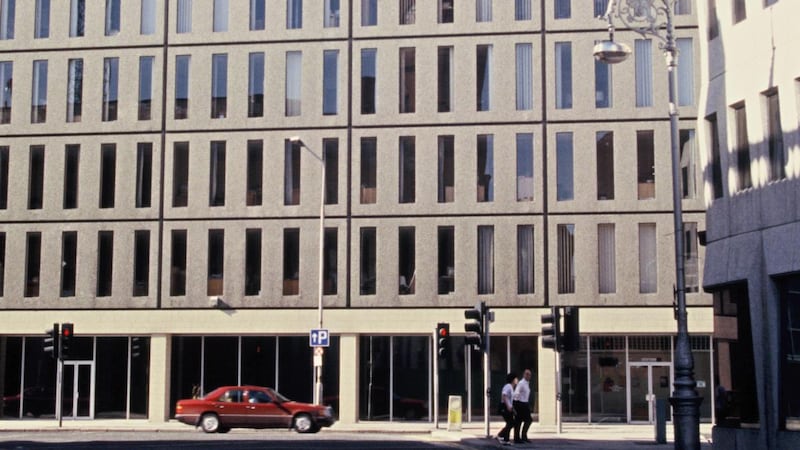
Hogan actually appealed against that plan, having been tipped off that it was in the pipeline. He suggested that Oisín House, with its relatively rare structural pre-cast panels and “unassertive presence” on Pearse Street, was a “unique architectural expression of the zeitgeist – the spirit of the time”. It was also structurally sound, adaptable and “could last indefinitely”, according to its architect.
Referring to the spate of schemes “involving the demolition of sound buildings no more than a few decades old”, he blamed city planners for permitting new buildings with much larger floor areas and significantly greater heights. “At a time when sustainability is correctly a matter of public concern, this… encourages a free-for-all attitude on the part of applicants, and is surely unsustainable.”
That’s because all of the embodied energy in existing buildings is wasted by their demolition and replacement, thereby increasing the carbon footprint of new buildings.
Glass is the new brickwork, and that's where architects want to be, because it's seen as 'cool' by tenants
According to Hogan, this process should be subject to a carbon tax calculated on the basis of a standard formula and charged to developers at a rate per cubic metre to encourage them to retain “sound and adaptable urban buildings”.
He disputes the thesis that older office blocks suffer from a “terminal defect”: lower floor-to-floor heights. This has made it difficult to install raised floors to accommodate computer cables and other services, all of which became the norm with desktop PCs and open-plan layouts. But technology is changing, and heavy cabling may not be required in future because of wireless computer networks.
“Architects have a vested interest in knocking things down,” he says bluntly. That was also true of his own firm, Tyndall Hogan Hurley, when it designed office blocks to replace palatial Victorian villas on Burlington Road. Now the shoe is on the other foot as “first-generation” offices are replaced. “Glass is the new brickwork, and that’s where architects want to be, because it’s seen as ‘cool’ by tenants.”
The short life expectancy of commercial developments was underlined by the contemporaneous demolition of Sun Alliance House on Dawson Street and the brick-clad office block on Molesworth Street that once housed Jones Lang Wootton and the passport office, both of which Hogan had designed between 1975 and 1982. They have now been replaced by considerably larger buildings by HJL Architects.
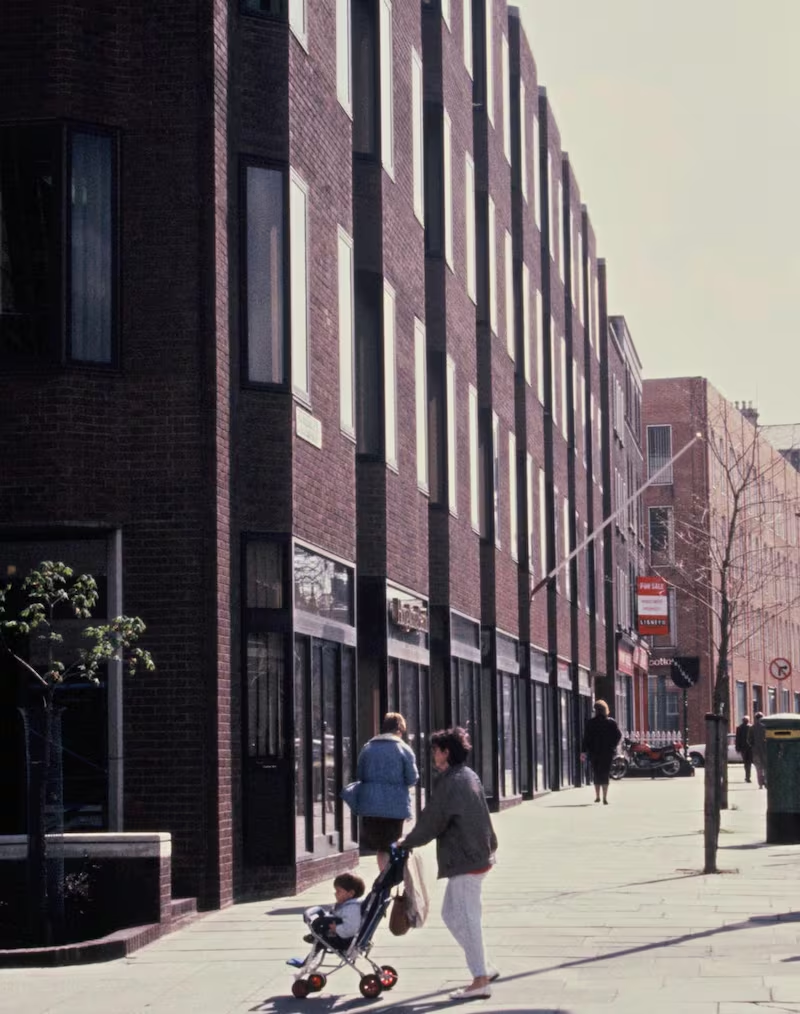
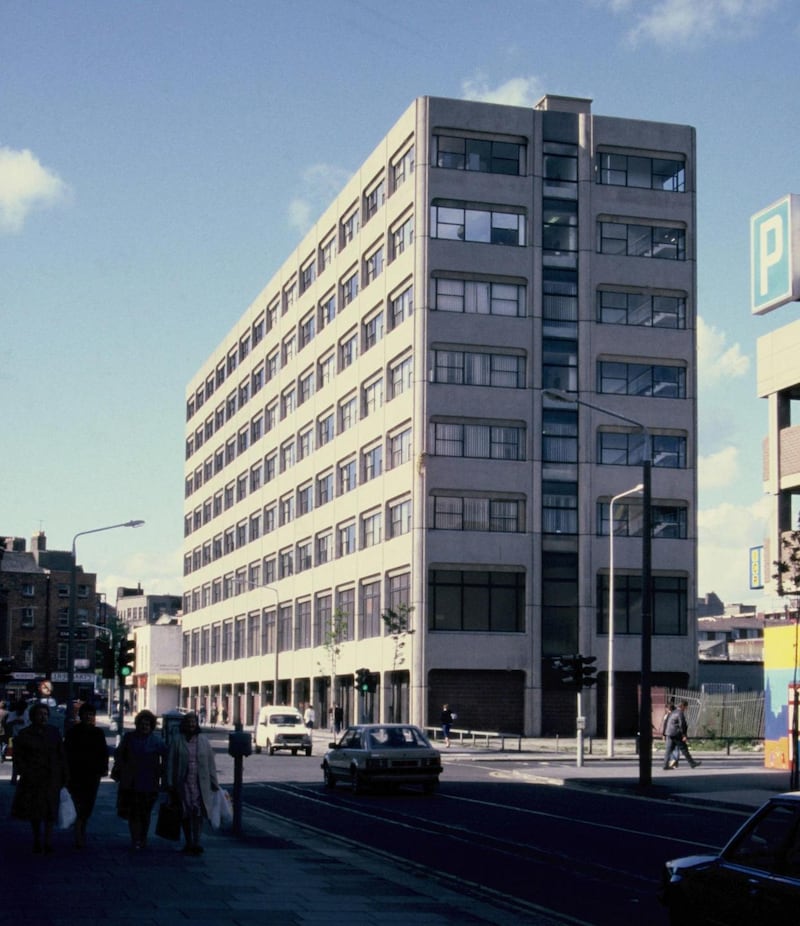
Also in line to be cleared away is the unloved Setanta Centre, now in the hands of Larry Goodman. In this case Hogan concedes that its incongruously horizontal pre-cast concrete façade, especially visible from the playing fields of TCD, was “a step too far on Nassau Street and we should have gone for a brick building”.
On Marlborough Street, another two of his buildings are in the firing line. A regrettable pre-cast concrete office block, raised on a podium behind Clery’s, is already being rebuilt as a budget hotel, while eight-storey Telephone House, which intrudes on the southward vista from North Great George’s Street, is likely to be converted into yet another budget hotel – if not demolished.
Brian Hogan was appalled to learn that the former AIB Bankcentre in Ballsbridge, designed by the late Andy Devane, is now being demolished
Next up is Wilton Place, headquarters of IDA Ireland and accountants Craig Gardiner; after this carefully-considered scheme was completed in 1982, it became known as the "Wilton Hilton" by IDA staff. Linked by a colonnaded plaza, the granite-clad blocks are scheduled to be replaced by a larger office development, designed by HJL for IPUT, which bills itself as "Ireland's premier property fund".
According to IPUT's head 0f construction, Tom Costello, who resigned recently as head of the National Children's Hospital development board, Wilton Place is "old" and "tired" after barely more than 35 years. However, Hogan maintains that it could have been renovated, saying it would be better to retain the existing structures "even if you don't like the look of the façades", and make the plaza's fountain work.
He was appalled to learn that the former AIB Bankcentre in Ballsbridge, designed by the late Andy Devane, is now being demolished.
Fitzwilton House, done by Shoolheifer & Burley for Sir Basil Goulding in 1969, is already gone, as is Bord Fáilte's headquarters at Baggot Street Bridge, a largely unappreciated modernist block by the legendary Robin Walker, one of the founders of Scott Tallon Walker.
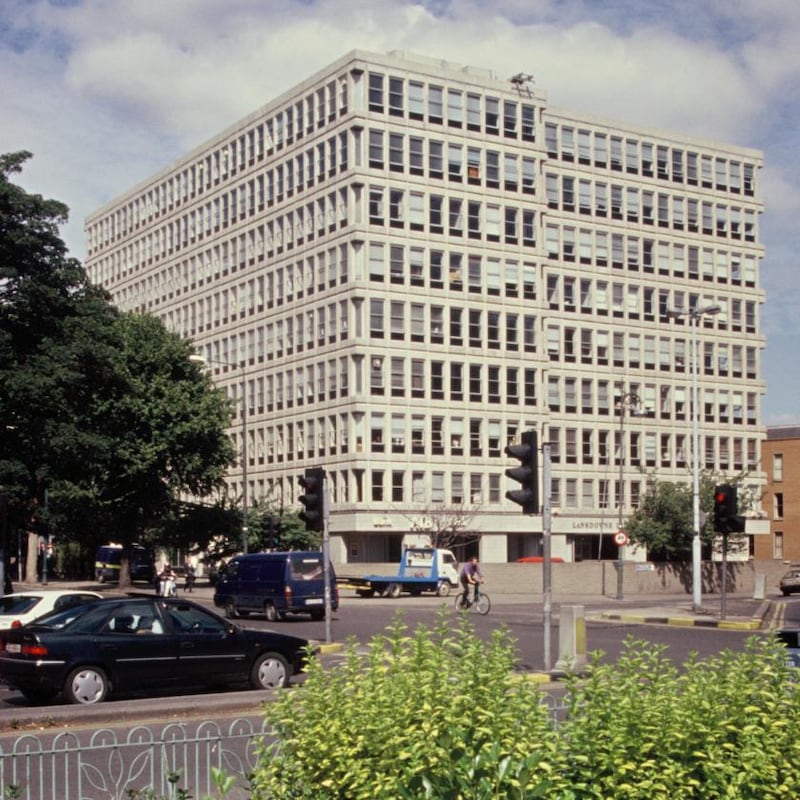
Lansdowne House, AIB's original headquarters, appears to be safe for the moment, after more than half a century. Recently renovated and now occupied by the Labour Court and the Workplace Relations Commission, this nine-storey building established a new height for commercial development in Ballsbridge and is so distinctive that it should be added to Dublin City Council's record of protected structures.
City planners have shown no inclination to list important examples of late 20th century architecture despite detailed expert reports
"Personally I think that a building should only last as long as it's needed," Hogan says. "Lansdowne House was the first office building in Dublin to use pre-cast concrete units made on site, and that fitted in with the Lemass-Whitaker idea of Ireland becoming an industrial society. It contains 90,000 square feet [8,360sq m] of office space and cost £5 per square foot to build. I think it's wearing very well."
However, the city planners have shown no inclination to list important examples of late 20th century architecture despite detailed expert reports commissioned by heritage officer Charles Duggan, now published in two volumes under the title More Than Concrete Blocks. The planners don't want to put obstacles in the way of "development" by listing little more than a handful of examples of our modernist heritage.
Ironically, the residential schemes Brian Hogan designed in the 1960s and 1970s, including a taller apartment block on the Mespil Estate, have all survived even as several of his office blocks are bulldozed.
And while he’s not at all happy about becoming a member of the “rubble club”, he remains quite philosophical about it. “I just noted their passing with regret and was glad that I had colour slides of them all,” he says ruefully.
Hogan is not the only one. Even the renowned Kevin Roche, Ireland's greatest expatriate architect, who died earlier this month at the age of 96, became a "rubble club" member when his 1970s New Haven Coliseum in Connecticut was demolished by implosion in January 2007. Roche avoided the upsetting experience of witnessing this event by making sure he wasn't in town on that fateful day.
Correction: an earlier version of this article incorrectly described Tom Costello as chief executive of IPUT. IPUT's chief executive is Niall Gaffney and Mr Costello is IPUT's head of construction. The article also stated that the Setanta Centre is the hands of Hines, the US real estate investment company. In fact, the Setanta Centre is now controlled by Larry Goodman.












